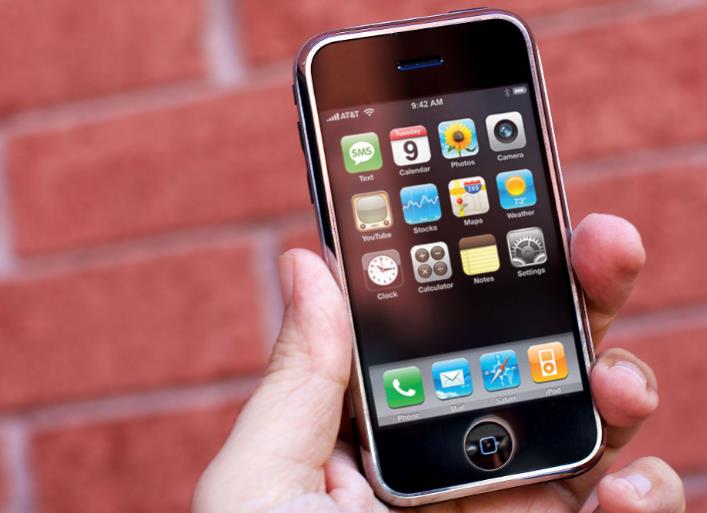Apple has just launched its latest flagship smartphone, the iPhone 15, which comes in four variants: iPhone 15, iPhone 15 Plus, iPhone 15 Pro, and iPhone 15 Pro Max. The new devices boast impressive features such as a 120Hz ProMotion display, a powerful A17 Bionic chip, a cinematic video mode, and a longer battery life. The prices range from $799 to $1,599, depending on the model and storage capacity.
But how does the iPhone 15 compare to the very first iPhone that Apple released in 2007? The original iPhone, which was unveiled by Steve Jobs at the Macworld conference in January 2007, was a revolutionary device that changed the landscape of mobile phones. It was the first smartphone to have a multi-touch screen, a virtual keyboard, a web browser, and an integrated iPod. It also introduced the concept of apps, which opened up a whole new world of possibilities for users and developers.

The original iPhone had a 3.5-inch display with a resolution of 320 x 480 pixels, a single-core processor with 128 MB of RAM, a 2-megapixel rear camera, and no front camera. It came in two storage options: 4 GB and 8 GB. It ran on iOS 1, which was later renamed as iPhone OS. It supported only 2G networks and Wi-Fi connectivity. It had a battery life of up to 8 hours of talk time, 6 hours of web browsing, or 24 hours of audio playback. It cost $499 for the 4 GB model and $599 for the 8 GB model.
The hype and excitement around the first iPhone launch
The first iPhone went on sale on June 29, 2007, in the US. It was met with huge anticipation and excitement from consumers and media alike. People lined up for hours or even days outside Apple Stores and AT&T outlets to get their hands on the coveted device. Some even camped out overnight or paid others to stand in line for them. The demand was so high that many stores ran out of stock within hours or minutes.
The first iPhone launch also generated a lot of buzz and curiosity among tech enthusiasts and experts. Many were eager to see how the iPhone would perform and what it could do. Some were skeptical about its usability and functionality, especially regarding its touch screen interface and virtual keyboard. Others were impressed by its design and innovation.
One of the most memorable media coverage of the first iPhone launch was a CBS News report that aired on June 28, 2007, featuring tech writer David Pogue as the main guest. The report showed Pogue demonstrating some of the features of the iPhone, such as zooming in or out of an image by pinching with his fingers, making a phone call by tapping on a contact name, browsing the web by flicking through pages, and playing music by swiping through albums. He also explained how the iPhone worked without a stylus or buttons, and how it automatically switched between portrait and landscape modes depending on how it was held.
The report also highlighted some of the challenges and drawbacks of the iPhone, such as its learning curve, its high price tag, its lack of third-party applications, its exclusive contract with AT&T, and its limited battery life. Pogue concluded his review by saying that the iPhone brought pleasure to users and that it should count.
The impact and legacy of the first iPhone
The first iPhone was a commercial success for Apple. It sold over 6 million units in its first year of availability. It also received critical acclaim from various publications and awards. It was named as the Invention of the Year by Time magazine in 2007. It also won several design and innovation awards from organizations such as BusinessWeek, PC World, Popular Mechanics, and CNET.
The first iPhone also paved the way for subsequent generations of iPhones that improved upon its features and capabilities. It also inspired other smartphone manufacturers to create their own touch screen devices that competed with or copied from the iPhone. It also sparked the growth of the app economy that created millions of jobs and businesses around the world.
The first iPhone is widely regarded as one of the most influential gadgets of all time. It changed the way people communicate, access information, entertain themselves, and interact with technology. It also set new standards for user experience, design, and functionality that are still relevant today.
